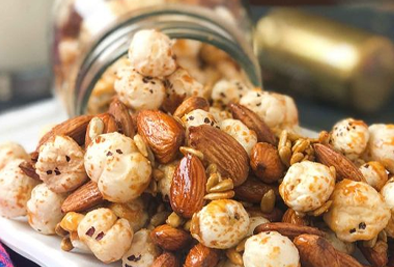How to Check the Quality of Makhana (Fox Nuts)
Makhana, also known as fox nuts or lotus seeds, has become a popular superfood in recent years due to its nutritional benefits and versatility. Whether you’re using makhana for a healthy snack or as a key ingredient in your recipes, ensuring that you’re choosing the best quality makhana is essential for the best taste and health benefits. Here’s how you can check the quality of makhana:
1. Appearance & Size
- Color: High-quality makhana should have a consistent white or off-white color. Avoid makhanas that are yellowish or have dark spots, as these could indicate poor quality or improper storage.
- Size: Premium makhanas tend to be larger in size. Smaller makhanas are often of lower quality, and they might have a tougher texture.
- Shape: The makhanas should be round or slightly oval. Any irregular shape or broken seeds may be an indicator of low quality.
2. Texture
- Crunchiness: When you bite into a good quality makhana, it should have a crisp and crunchy texture. If it feels chewy or soggy, it’s likely been stored improperly or is of low quality.
- Smoothness: The surface of good makhana is usually smooth and free from cracks. Cracks can make them more vulnerable to moisture, leading to spoilage.
3. Taste
- Neutral Flavor: Makhana has a subtle, nutty flavor. If the taste is bitter, rancid, or overly pungent, it could be a sign of poor quality or that they’ve been sitting for too long.
- Freshness: Fresh makhana will have a light, airy taste. A stale or off-flavor is a clear sign of bad quality.
4. Smell
- Fresh and Mild: The smell of makhana should be mild, with a slight nutty fragrance. Any off-smell, like a sour or musty odor, indicates that the makhana is old or improperly stored.
- No Chemical Odor: Some low-quality makhanas may be treated with chemicals or preservatives to improve shelf life. A strong chemical smell can be a sign that the makhana isn’t organic or of good quality.
5. Packaging
- Sealed and Airtight: Always choose makhana that is properly sealed in an airtight pack to avoid moisture. Poor packaging can lead to the growth of mold or loss of crunch.
- Storage Information: High-quality brands will provide storage instructions on their packaging, ensuring that you know how to keep the makhana fresh for longer.
6. Check for Foreign Particles
- Cleanliness: Always check the pack to make sure there are no foreign particles, like dust or dirt. Makhana is a naturally clean product, but poor packaging or handling can lead to contamination.
- Sorting: Some low-quality makhanas may have seeds that are broken or have other seeds mixed in. High-quality makhanas are sorted and processed carefully.
7. Test by Roasting
- Roast a Few: A simple test to check the freshness and quality is to roast a few seeds. High-quality makhanas will puff up evenly when roasted. If they don’t puff up or turn out soft, it may not be of the best quality.
8. Source of Makhana
- Origin Matters: Makhana grown in regions like Bihar (India) is known for being of premium quality. Checking the origin of the makhana can give you insight into its quality.
9. Nutritional Information
- Look for Organic or Natural Labels: High-quality makhanas often come with labels indicating they are organic or free from preservatives. These are usually the best choice for your health.

